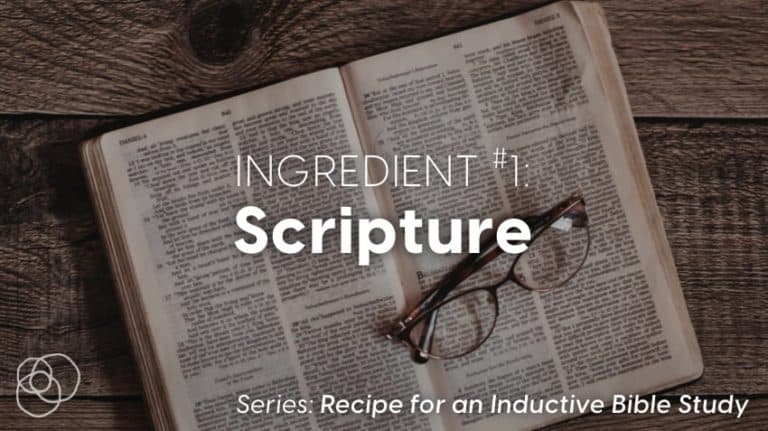
by Erin Bird
This coming Sunday (as of this writing), we will conclude our sermon series, Putting the Bible in its Place. While I'm eager to get back to the book of Mark, I've enjoyed doing a very different type of sermon series with you this past month. Hopefully, the series has been very helpful in building your confidence in God's Word. (If you've missed any of the sermons in the series, you can catch up on the website or your favorite podcast app (simply search for "Riverwood Church Waverly Iowa sermons").)
However, it's one thing to know about God's Word, and another to actually know how to study it. While there are multiple ways to study the Bible (we did an entire series here in the News & Notes back in the Fall of 2019 on Bible Study Methods entitled How to Study the Bible), I want to teach you one of the easiest and most effective Bible Study methods I know. This method is known as an Inductive Bible Study.
In the Bird House, Monday nights are my night to plan and make dinner. Full transparency: I'm not great in the kitchen. Thankfully, no one in my family has gotten ill from the food I've made, but I also don't have family members begging for me to make a special dish. (LeAnn is a FAR better cook than I!)
Because my cooking IQ diminishes the closer I get to an oven, I often have to rely on a recipe. One thing I've learned about recipes is that I not only need to put in the correct quantity of an ingredient, but I also have to put the ingredients in the bowl in the correct order! For instance, no one will like your Mac & Cheese if you drain the water from the noodles after adding the cheese packet from the box. (Apparently, most people don't prefer mac & cheese soup. Who knew?!?)
Likewise, when studying the Bible, you need the right "ingredients" and utilize them in the proper order. So we are going to look at each "ingredient" of the Inductive Bible Study "recipe" over the next 5 weeks.
The word "inductive" (according to good ol' Merriam-Webster) means "of, relating to, or employing logical induction." This means a good inductive Bible Study helps you avoid reading too much into the text, while also avoiding the mistake of taking a verse out of context, twisting it away from its original meaning without having to consult 14 commentaries.

But how do you begin?
This is rather obvious, but before you can do a Bible study, you actually need a Bible! Then you have to open that Bible to Ingredient #1: a specific Scripture passage.
I've been in many "Bible" studies that are really discussion groups. People might take about the Bible, maybe reference a favorite verse or story, and even say plausible-sounding clichés, but they never really look at the Scripture, drawing truth from it. But a good Inductive Bible Study gets most all of its "meat" right from the source - the Scriptures.
But through this series, I don't want to just talk about the recipe. Rather, I want to take the time to apply this recipe with you. Throughout this email-only series, our "Ingredient #1" will be Hebrews 4:14-16. Then each week, we will apply a different ingredient together, helping you come away with a greater understanding of the passage and what God is communicating to us.
So grab your Bible next Thursday when you open our next edition of the News & Notes join me next week as we apply Ingredient #2 of the Inductive Bible Study Recipe: Observation.
Receive Riverwood's "News & Notes" weekly email in your inbox. Submit your email address below and stay in the loop.

We are on a mission to help people love like Jesus loved and live like Jesus lived.
It doesn't matter to us if you:
No matter where you are in your spiritual journey, we want to help you become who God has created you to be.